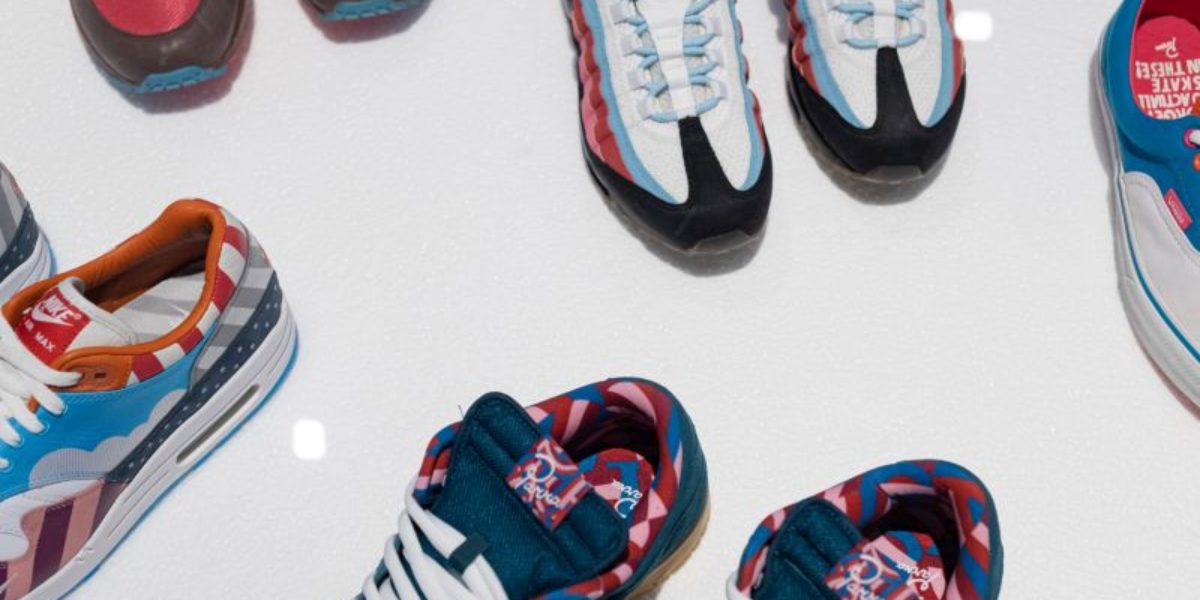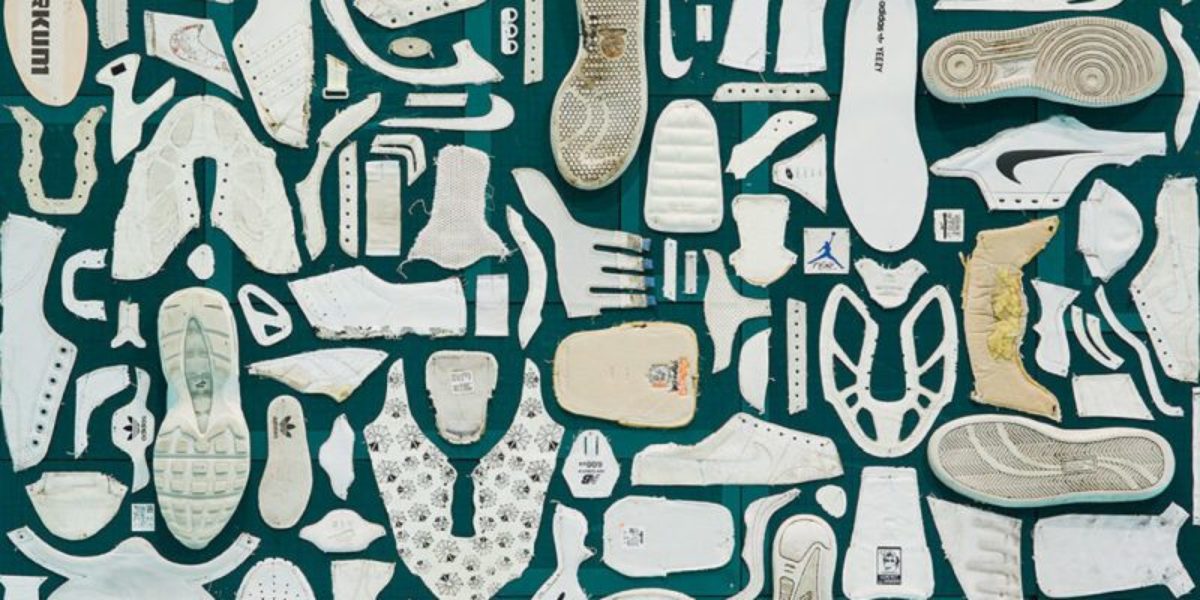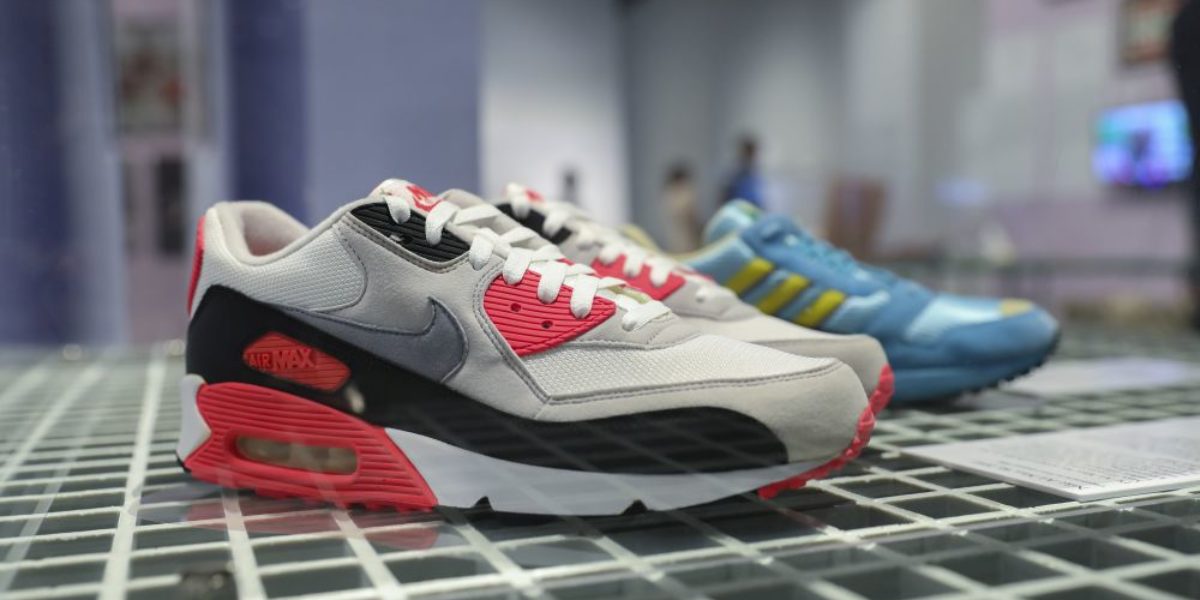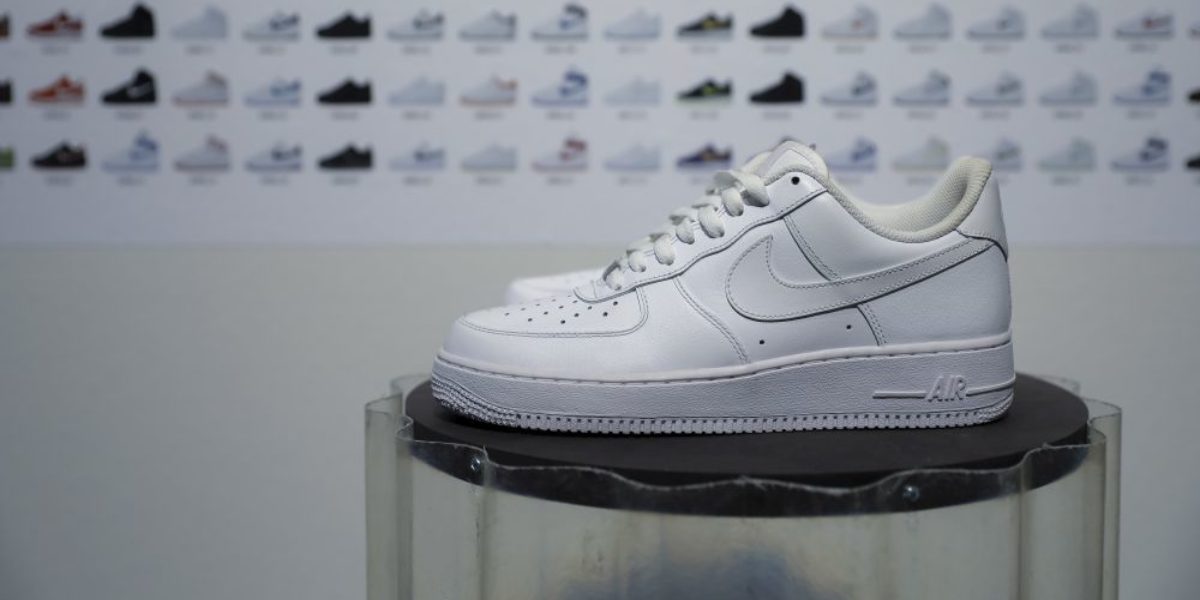From the Exhibition: Sustainability and Circular Design
Sneaker production is exceptionally carbon-intensive. A typical pair of running shoes generates approximately 13.6kg of CO2 emissions. Most sneakers consist of problematic materials, including synthetic rubber and plastic, which are created using energy-intensive processes and bound together using glues that are harmful to the environment. The scale of sneaker production is growing, with millions of pairs ending in landfill and taking decades to degrade. There is a multitude of promising projects underway to address these issues, including innovation in materials and manufacturing, a concerted effort to repair and recycle, and a greater understanding of circular design.
Materials and manufacturing innovation
Designing out waste and pollution, and keeping products and materials in use, are two key principles of circular design. Using biodegradable materials in the production process and developing less harmful alternatives, such as animal-free leathers, are some of the more sustainable choices sneaker brands are making. Younger brand entering the industry pride themselves on transparent supply chains and more ethical working practices. Some of the ways in which brands are tackling inherent flaws in their manufacturing practices include designing modular systems, where elements of a shoe can be easily replaced, reducing the steps in the production process, the use of glues, and excessive travel and transport.
Repair, Remake, Create
Caring for and preserving sneakers in their best condition has long been an important part of sneaker culture. Services such as customisation, re-dying and remaking are growing in number and popularity, and breathing new life into old sneakers has become important for many designers and makers. Consumers can play a part in circular design, long after a shoe has been produced and worn. Efforts are also being made to create a more equitable future for the sneaker design industry, by ensuring that more diverse
voices and interdisciplinary design practices are included in the process.




















